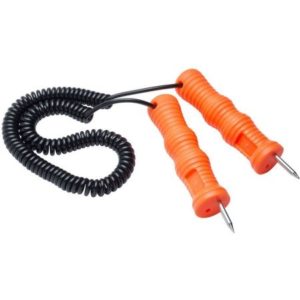ICE SAFETY
Many people use the lake year round. Ice fishing and snowmobiling are popular activities in winter. There is never a guarantee that a frozen lake is a safe place to be. Hidden soft areas, cracks, incoming tributaries, and bubblers installed around docks all present unseen and unpredictable dangers. The beginning and end of the winter season, when the ice is freezing and thawing, is especially difficult to judge. The utmost caution should always be used when venturing out on a frozen lake. Some generally accepted precautions include:

- always go on a frozen lake with a buddy
- take a cell phone and let others know you are going
- wear a PFD under your winter gear
- beware of ice covered by snow, which can insulate ice and keep it from freezing, hide cracks and weak ice
- steer clear of lake edges, which may be softened by incoming moving water
- know where the incoming streams are located. (There is a stream located in the SE cove at the Killian property, one in the northern corner of Slack's Pasture cove and one to the left of the Gutner property.)
- keep pets on a leash, and do not attempt a rescue a pet who falls in – call for help
- carry a length of nylon rope to throw to your buddy
- carry handmade or purchased “ice claws” to help you climb out of the water should you fall in (click HERE for more information on making your own ice claws)
NO ICE IS SAFE
We asked the State about ice safety. The official policy is: ‘NO ICE IS SAFE’. But there are some general common-sense things to be aware of. There should be a minimum of 4” of NEW, CLEAR ICE to support walkers. Ice thickness can vary dramatically within just a few feet and does not necessarily freeze uniformly. Factors such as currents, springs and vegetation rotting under water will affect the thickness. Even a particularly active group of fish can reduce ice thickness. Early in the season a layer of snow on top of the ice can have an insulating effect, slowing down the freezing process. Ridge lines may form as new ice freezes toward the center of a lake. Be careful around these ridgelines until it is certain that the ice is solid. The areas around the Red Bridge Dam and the Narrows are known to have thin ice and open water at all times and should be avoided.
BUBBLERS
Even when the center of the lake is frozen solid there will be open water around docks that employ a bubbler system. Bubblers are devices that prevent ice from forming around docks and are intended to ensure that the natural crushing pressure of ice is not able to squeeze the structure. When on the ice, please use extra caution around dock areas.
ICE FISHERMEN
Generally, the best guides to determine if the ice is safe are the local ice fishermen. If you see them out on the lake walking around, drilling holes, you can be more confident that the ice has reached the necessary thickness and is safe in that area. Local bait shops are also a good source of information and can offer some general advice (as well as fishing licenses and ice fishing gear). The Tyson store (228 2284) starts stocking bait around the end of November until mid-April. Their constant interaction with local fishermen can provide useful information.
Some years ago, the LRA donated money to the Ludlow Fire Dept. for an Ice Rescue Sled. The volunteer firemen train with this sled every year and are prepared to use it if an ice rescue becomes necessary. But none of us wants to see this piece of equipment in action.
YOU ARE ON THE ICE AT YOUR OWN RISK
Be cautious at all times and remember: You are on the ice AT YOUR OWN RISK! Accidents can and HAVE HAPPENED on our lakes: My Final Walk on the Ice, by Liz Spaulding

